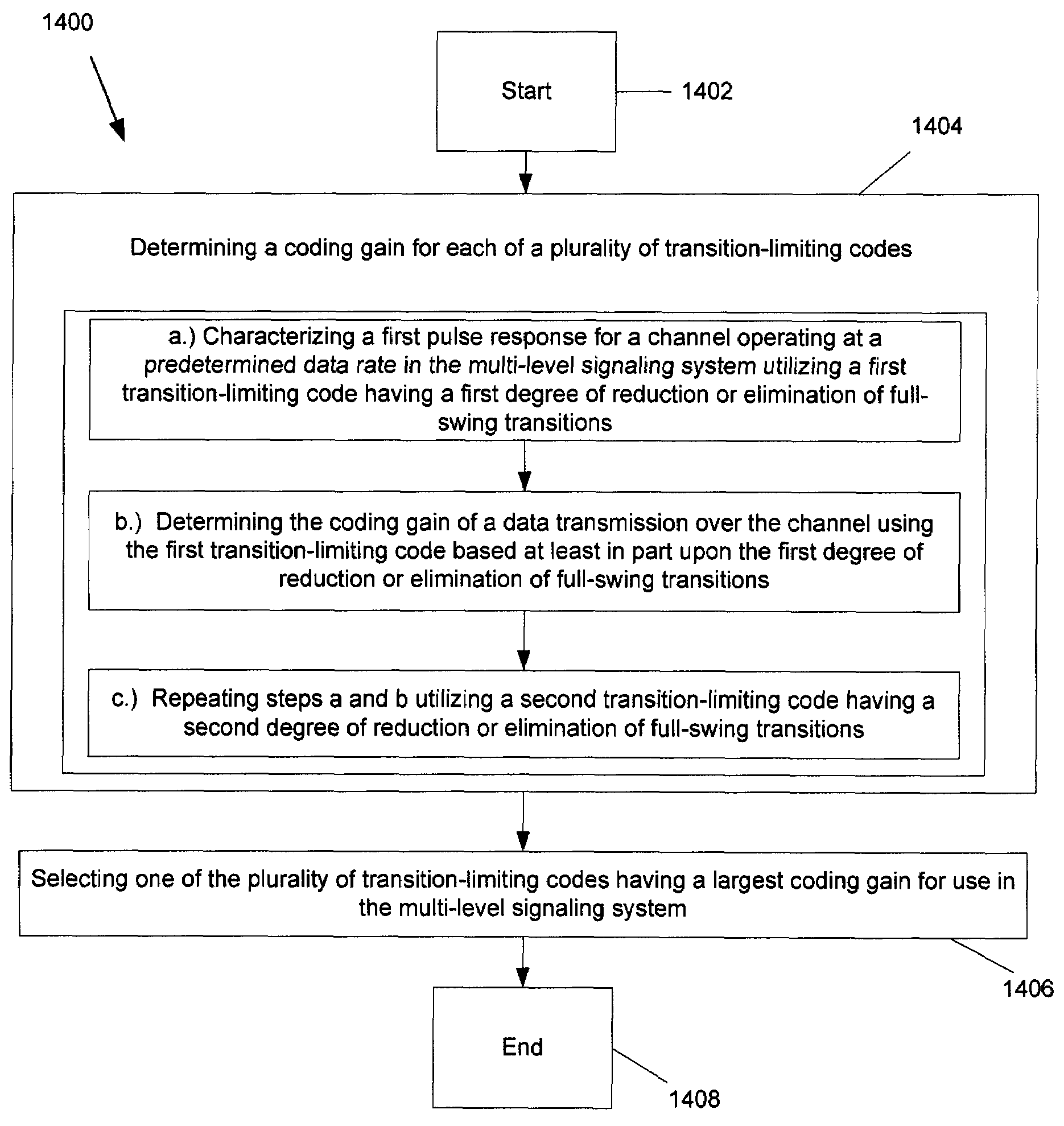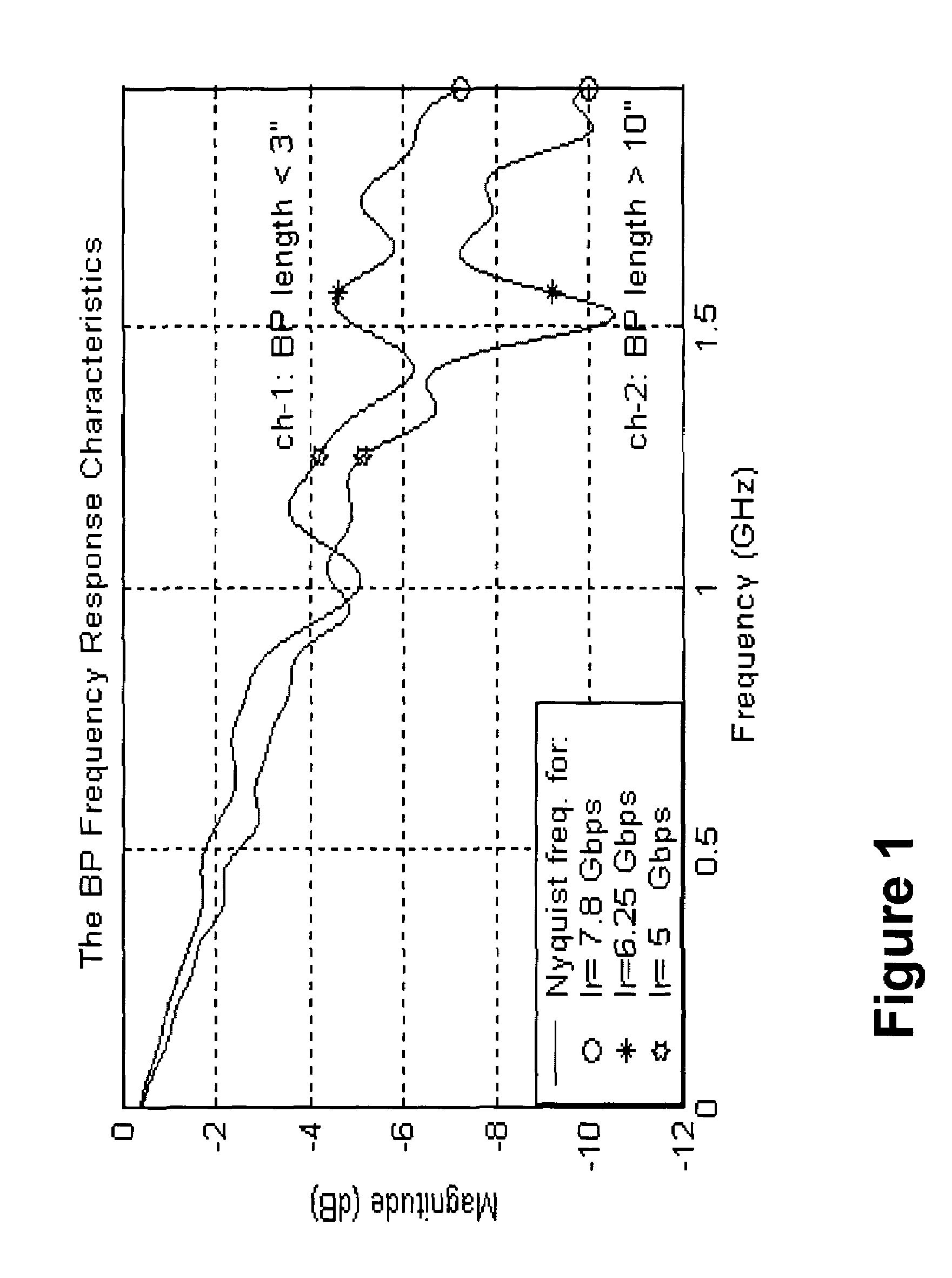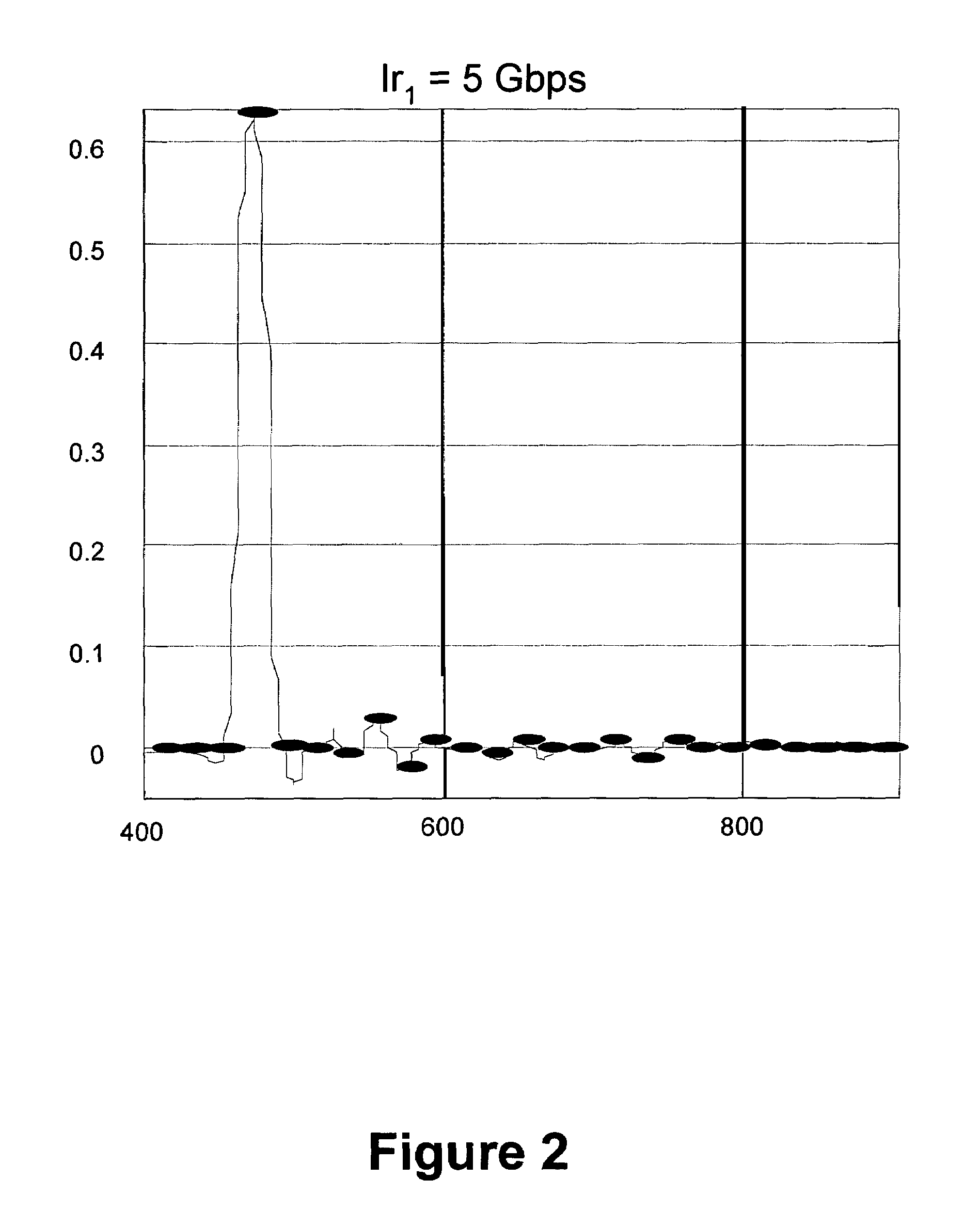Technique for determining an optimal transition-limiting code for use in a multi-level signaling system
a signaling system and transition limit technology, applied in the field of multi-level signaling, can solve the problems of significant signal distortion of high-speed serial link channels delivering effective data rates above 5 gb/s in a backplane environment, significant constraints on space, and increased cross-talk effects from far and near-end adjacent channels
- Summary
- Abstract
- Description
- Claims
- Application Information
AI Technical Summary
Benefits of technology
Problems solved by technology
Method used
Image
Examples
Embodiment Construction
)
[0035]Transition-limiting codes have been developed which eliminate the number of full-swing transitions (FST) between sequential symbols in a multi-level signaling system. These transition-limiting codes have also been developed to provide useful clock data recovery (CDR) transitions. Other transition-limiting codes have been developed which reduce the number of full-swing transitions (FST) between sequential symbols in a multi-level signaling system. These other transition-limiting codes have also been developed to usually provide useful clock data recovery (CDR) transitions. The present invention provides a technique for determining which of the above-mentioned transition-limiting codes, or any number of other transition-limiting codes, is an optimal transition-limiting code for use in a multi-level signaling system. For purposes of understanding the present invention technique, it is first useful to realize the effectiveness of transition-limiting codes. Such effectiveness may ...
PUM
 Login to View More
Login to View More Abstract
Description
Claims
Application Information
 Login to View More
Login to View More - R&D
- Intellectual Property
- Life Sciences
- Materials
- Tech Scout
- Unparalleled Data Quality
- Higher Quality Content
- 60% Fewer Hallucinations
Browse by: Latest US Patents, China's latest patents, Technical Efficacy Thesaurus, Application Domain, Technology Topic, Popular Technical Reports.
© 2025 PatSnap. All rights reserved.Legal|Privacy policy|Modern Slavery Act Transparency Statement|Sitemap|About US| Contact US: help@patsnap.com



